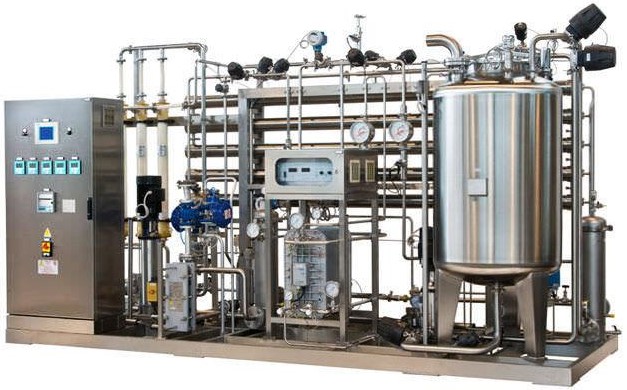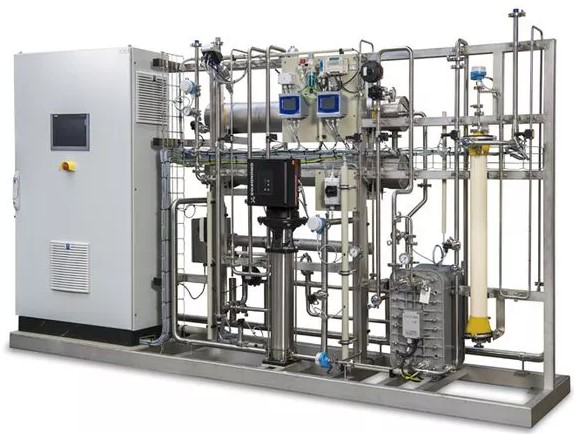
|
The Design of Water Purification Systems
General Overview:

-
Water Source: Identify a suitable source of water, such as tap water or a natural source like a well. The quality of the source water will influence the required purification processes.
-
Pretreatment: Implement pretreatment processes to remove particulates, suspended solids, and larger contaminants from the source water. This may involve filtration, sedimentation, and/or clarification methods.
-
Primary Purification: Utilize specific purification methods to remove impurities and contaminants from the pretreated water. Common techniques include reverse osmosis (RO), activated carbon filtration, deionization (DI), and ultraviolet (UV) disinfection. The selection of purification methods depends on the water quality requirements and desired level of purity.
-
Storage and Distribution: Store the purified water in appropriate tanks or reservoirs to ensure a continuous supply. Use stainless steel or other suitable materials for storage vessels to maintain water quality. Design a distribution system with the necessary piping, valves, and fittings to transport purified water to various points of use within the facility.
-
Monitoring and Control: Install monitoring and control systems to continuously monitor key parameters such as conductivity, total organic carbon (TOC), pH, temperature, and microbial content. Use appropriate sensors, analyzers, and control mechanisms to maintain water quality within specified limits.
-
Sanitization and Disinfection: Implement sanitization and disinfection procedures to prevent microbial growth and ensure the microbiological quality of the purified water. This may include periodic flushing, disinfection with chemical agents, or thermal sanitization methods.
Design of Water for Injection (WFI) Systems:

-
Water Source: Identify a suitable source of water, such as purified water or another purified water system. The source water should meet the requirements for purified water as a starting point.
-
Distillation System: The WFI system typically includes a multi-stage distillation process to remove impurities effectively. The number of distillation stages can vary depending on the desired level of purity and the specific requirements of the application. Multiple distillation columns, such as a preheater, evaporator, and condenser, are used to remove contaminants through the process of evaporation and condensation. Each distillation stage further purifies the water, leading to the production of WFI.
-
Hot Loop: A hot loop is an integral part of WFI systems. It involves circulating a portion of the WFI back to the feed side of the distillation system. This hot loop helps maintain the temperature and prevent the accumulation of impurities in the system. The hot loop ensures that any impurities or endotoxins that might have entered the system are continuously purged and do not accumulate in the final WFI product.
-
Multiple Distillation Stages: The use of multiple distillation stages enhances the purity of the WFI. Each stage serves to remove specific impurities, such as volatile compounds, non-volatile solids, gases, and microorganisms. The number of stages may vary depending on the desired quality and regulatory requirements.
-
Storage and Distribution: WFI is stored in dedicated tanks or reservoirs made of suitable materials, typically stainless steel, to maintain its purity. The distribution system includes sanitary piping, valves, and fittings designed to prevent contamination and maintain the quality of WFI during transport to various points of use.
-
Monitoring and Control: As mentioned earlier, a comprehensive monitoring and control system is essential to ensure the quality of WFI. Continuous monitoring of critical parameters such as conductivity, TOC, endotoxin levels, pH, temperature, and microbial content is necessary. Automated sensors and analyzers are used to monitor these parameters, and appropriate control mechanisms are employed to maintain the specified limits.
-
Sanitization and Disinfection: The WFI system requires regular sanitization and disinfection procedures to prevent microbial growth and maintain the desired purity. Thermal sanitization methods, such as hot water or steam, are commonly used to ensure the microbial quality of the system. The frequency and procedures for sanitization and disinfection should be based on regulatory requirements and best practices.
Design of Sterile Water for Injection (SWFI) Systems:
-
Sterilization Methods: The primary method for achieving sterility in the SWFI system is through the use of validated sterilization techniques. The most common methods include steam sterilization (autoclaving) and filtration. These methods ensure that the water used for producing SWFI is free from viable microorganisms.
-
Pre-treatment: Prior to sterilization, the feed water undergoes pre-treatment steps to remove impurities. This typically includes processes like filtration, activated carbon treatment, and ion exchange to reduce particulate matter, dissolved solids, and other contaminants. These pre-treatment steps help maintain the efficiency and longevity of the sterilization methods.
-
Sterilization Equipment: Steam sterilization (autoclaving) is commonly used for the sterilization of SWFI. The system includes a steam generator or boiler that produces high-quality steam, which is then injected into the water to achieve the required temperature and pressure for sterilization. The equipment used should be designed and validated to ensure effective sterilization.
-
Distribution System: The distribution system for SWFI is similar to that of other purified water systems. It includes dedicated storage tanks or reservoirs made of appropriate materials, such as stainless steel, to maintain sterility. Sanitary piping, valves, and fittings are used to transport the SWFI from the storage tanks to various points of use, such as pharmaceutical manufacturing processes or sterile compounding.
-
Monitoring and Control: Continuous monitoring of critical parameters such as temperature, pressure, conductivity, and microbial content is essential to ensure the quality and sterility of SWFI. Automated monitoring systems are employed to detect any deviations from the specified limits. Additionally, a robust control system is in place to maintain the required conditions for sterility throughout the distribution process.
|